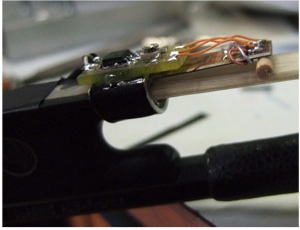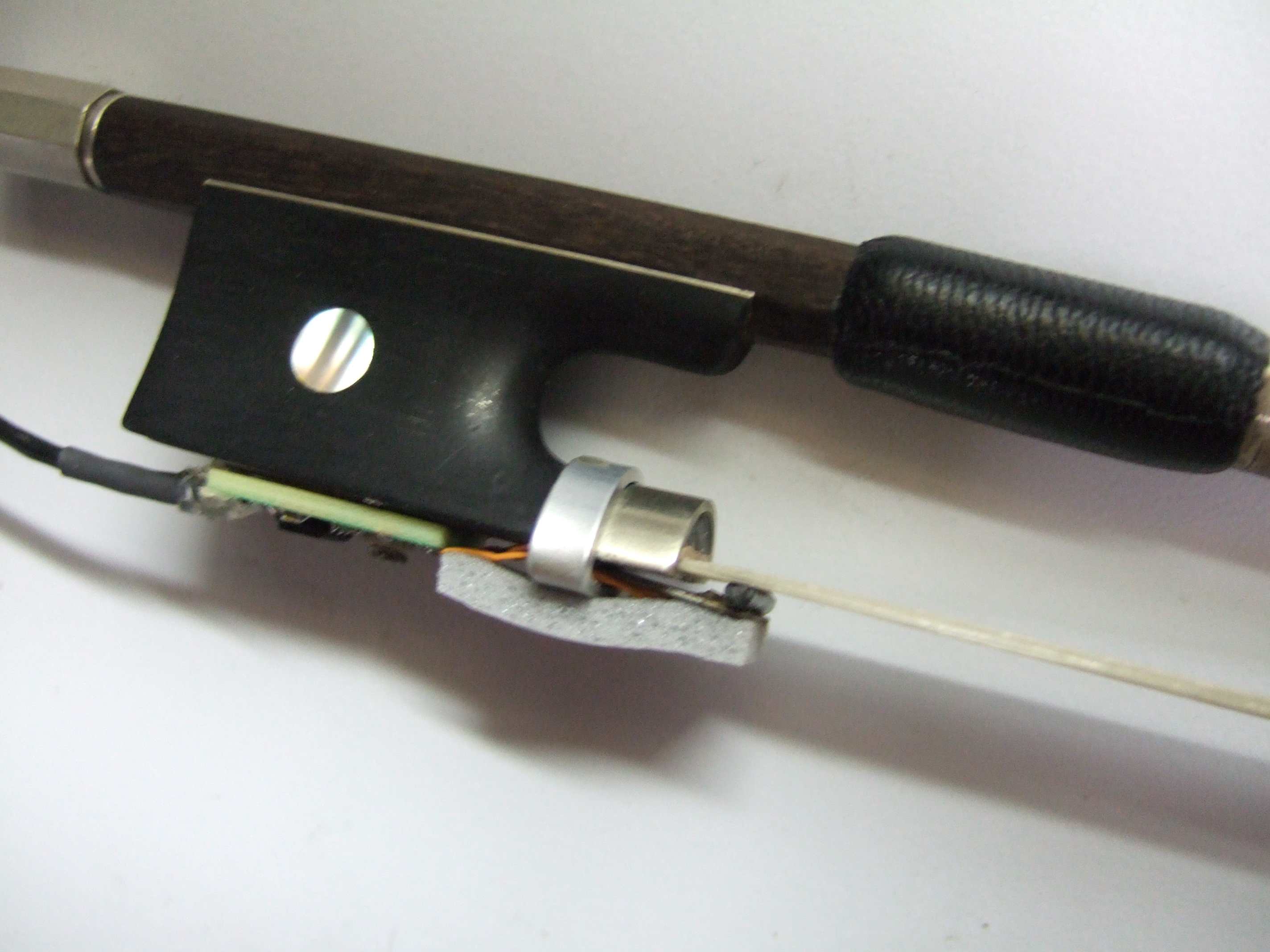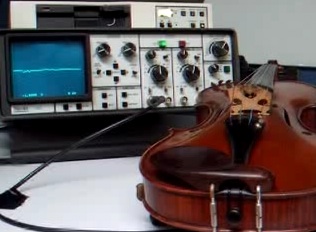Matthias Demoucron
Doctorant, Sound synthesis of bowed string instruments- Tel : 01 44 78 14 86
- Email :

These pages present some material related to my PhD work. You will find sounds, videos and illustrations that could not be included in the paper version. Feedbacks, remarks, suggestions, constructive critics and intellectual supports are welcome...
- Introduction
- PhD thesis: On the control of virtual violins - Physical modeling and control of bowed string instruments
- Measurements of bowing parameters in real performance
- Sound examples: control with real measurements and synthesized gestures
- Control interfaces: real time control with physical interfaces
A principal aim of this work was to study the violinist's control of the instrument in normal playing, in order to formulate general rules and describe characteristic features which could be used to obtain realistic control of violin synthesis. For that purpose, the development of dedicated measurement devices for recording the bowing parameters has been a key point of the work.
In particular, we tried to develop a robust bow force sensor that could be attached to any bow with minimal modifications. Then, the sensor has been combined with accelerometers and an optical motion capture system in order to obtain a complete description of the player's bowing.
Bow force sensor
Sensors are placed on the bow for measurements of the transverse forces at the termination of the bow hair. The core element of the sensor is a thin leaf spring of steel. The displacement of the spring under loading of the deflected bow hair is measured by strain gauges.A complete set of these sensors has been developed on the occasion of composer Florence Baschet's creation StreicherKreis for augmented string quartet.

Sensor used for laboratory measurements. |

Sensor developed for Florence Baschet's StreicherKreis. |

Click on the picture to watch the movie
Measurements with motion capture
Experiments using an optical motion capture system were performed at Input Devices and Music Interaction Laboratory (IDMIL), McGill University, Montreal. A complete setup including a thorough calibration and correction of the force sensor signal was developed together with Erwin Schoonderwaldt.The next videos show players reconstructed from the markers position, and a visualisation of the computed bowing parameters.
Violin: Lambert Chen
Researchers: Erwin Schoonderwaldt, Matthias Demoucron, Marcelo M. Wanderley
Lab: IDMIL, McGill
Videos: Erwin Schoonderwaldt
